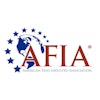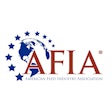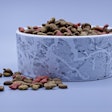In May in Gaithersburg, Maryland, USA, the Center for Veterinary Medicine in the US Food & Drug Administration (FDA) held a public meeting to present progress on its development of the Animal Feed Safety System (AFSS). I saw a mention of the meeting in the popular press that presumed it was convened in response to the recent petfood recalls. However, this meeting was planned well in advance of that incident. In fact, this was the fourth AFSS public meeting over the past several years.
Background information on AFSS and a chronology of its meetings may be found at www.fda.gov/cvm/afss.htm. The most recent meetings have focused on specific aspects of the system. The meeting held in September 2006 primarily dealt with the agency's methods to determine Health Consequence Scores (HCS) for various potential contaminants of animal feed. This meeting concentrated on the methods to determine Exposure Scores (ES) for these contaminants. Copies of the presentations for this latest meeting may be found at www.fda.gov/cvm.
Exposure scoring
An ES is a determination of the likelihood that an animal will be exposed to a chemical, physical or biological contaminant by consumption of an animal feed. The first consideration is what ingredients comprise the feed and the potential contaminants each ingredient may contain. For example, corn-based ingredients may be a source of aflatoxin contamination, while poultry-based ingredients may harbor Salmonella. The potential contaminants of each ingredient are considered along with the relative proportions of the ingredients that may comprise the feed, so a picture of what contaminants may possibly be in a feed are determined.
Also considered is the effect of processing and handling on the contaminant, both at the ingredient and final feed levels. For example, many different heat processing methods may decrease the amount of microbiological contamination of the feed, depending on time and temperature of the cooking process and the organism in question. On the other hand, improper handling of the feed post-processing may increase the level of microbiological contamination. In the same vein, some types of processing may destroy or extract chemical contaminants, but other types will merely concentrate them in the processed ingredient or finished feed.
Use of exposure scores
The ES doesn't say much by itself. Just because there may be a high likelihood that an animal will be exposed to a contaminant from consumption of a feed doesn't mean that it presents a risk to animal or human health, because that contaminant may have a minimal health consequence. Along those lines, a high HCS may be indicative of a significant probability of severe illness upon exposure, but that fact alone doesn't necessarily mean that the contaminant in question presents a concern because the chance of exposure is low. However, when the ES is considered along with the HCS, an estimate of risk to health from a given contaminant in feed can be determined.
These risk estimates aren't absolute values, though. Rather, they represent the health risks for a given contaminant relative to that determined for other contaminants. These relative risks can then be ranked to get a clearer picture of which contaminants should be of the highest and lowest concerns. The ranking is a valuable, but not sole-determining factor in how those risks should be managed with the resources at hand.
FDA has indicated that the risk estimates are to be used for internal guidance only, such as to help the agency set surveillance priorities. For example, if this ranking exercise shows that the risks to human and animal health from exposure to pesticides in feeds is minimal compared to that from aflatoxins, FDA could choose to spend fewer resources for testing of samples for the former and conduct more testing for the latter. However, this program ultimately affects animal feed and petfood companies, too, so it is prudent for manufacturers to keep apprised of FDA's priorities and adjust their own procedures accordingly.
The future of AFSS
FDA currently plans at least one more public meeting, tentatively scheduled for February 2008 (www.fda.gov/AnimalVeterinary/SafetyHealth/AnimalFeedSafetySystemAFSS/ucm053805.htm). The intent of this one would be to help tie things together, i.e., explain how the ES and HCS are to be combined to create a rank order of feed contaminant risks. FDA hasn't ruled out additional meetings if deemed necessary.
Frequently mentioned by FDA is the paucity of data on many aspects of AFSS, which affects its estimates of risks and, ultimately, its ability to manage these risks accordingly. For example, FDA may have only data related to a broad category, e.g., incidence of a particular pesticide in "animal products and by-products," whereas knowledge of its incidence in a protein ingredient vs. an animal fat source would be of far greater service. Thus, more data on the levels of contaminants in feeds and feed ingredients that are being found by industry are always welcome, with the understanding that such submitted data are potentially releasable to the public.
Also, where data are sparse, expert opinion may help fill the gaps. The latest presentations included several worksheets designed by FDA to help it estimate the effects of processing on contaminants. FDA invites and encourages outside experts to submit these worksheets (filled in as their expertise allows). While the copies of the "expert opinion" worksheets as displayed on the web version of the presentations aren't very legible, I'm sure FDA would make them available to interested parties upon request (see www.fda.gov/cvm/afss.htm for contact information).
Finally, comments on any aspect of AFSS may be submitted to the public docket. Comments may be sent (in re: Docket Number 2003N-0312) by mail to the Division of Dockets Management (HFA-305), Food and Drug Administration, 5630 Fishers Lane, Room 1061, Rockville, Maryland 20852 USA.















